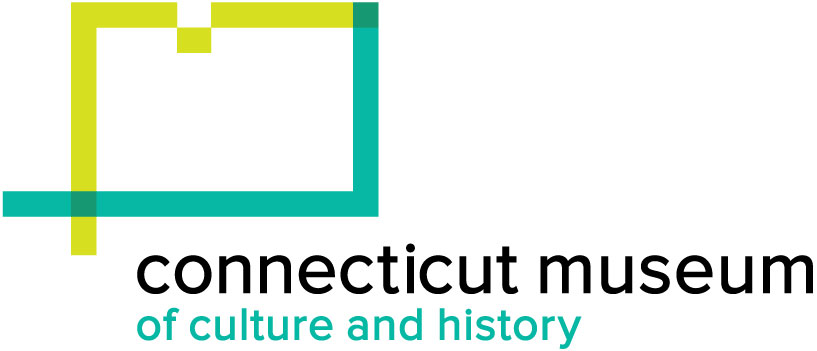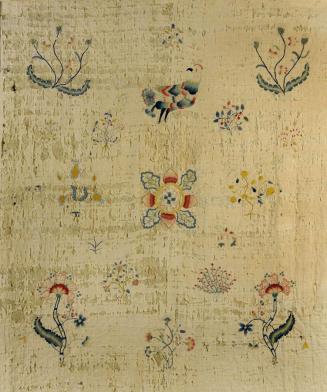Crewel Embroidered Fragment
EmbroidererAttributed to
Mary Edwards
(American, born 1701)
Date1742
MediumHand-stitched embroidery; crewel wool on plain-weave linen
DimensionsPrimary Dimensions (height x width): 26 3/4 x 3 3/4 in. (67.9 x 9.5 cm)
ClassificationsTextiles
Credit LineGift of Hannah Whittlesey
Object number1840.7.2
DescriptionLinen fragment, or band, hand-stitched with crewel, or two-ply worsted wool, on a plain-weave linen ground. The wool on the band is in many colors, including light medium and dark blue, red, light and medium pink, yellow, green and blue-green. The band is decorated with an undulating vine with large and small flowers and leaves on the vine. The band is constructed of a single strip of linen. The right edge is the selvedge. The top, left and bottom edge have a single-turned hem that is not stitched; portions of the hem are not folded. The design was outlined in black ink prior to embroidery.
Stitches: The pricipal stitch on the band is outline; it also includes satin, encroaching satin, long and short, and buttonhole.
Condition: Areas of the crewel wool are missing from almost every element of the design. The wool has faded on the front. The ground is missing or has holes in two major areas toward the left side of the band; these holes correspond to the location of crewel embroidery that is now missing. The ground is creased.
Stitches: The pricipal stitch on the band is outline; it also includes satin, encroaching satin, long and short, and buttonhole.
Condition: Areas of the crewel wool are missing from almost every element of the design. The wool has faded on the front. The ground is missing or has holes in two major areas toward the left side of the band; these holes correspond to the location of crewel embroidery that is now missing. The ground is creased.
Label TextThis band was the strip at the front edges of an open robe gown. The
front has moth damage, but the reverse provides a sense of the original
rich colors, subtle shading, fine stitching, and sophisticated, naturalistic
rendering of exotic flowers and a sinuous vine. The reverse is nearly as
fully covered by yarn as the front. Later Connecticut crewel embroidery
typically shows stitches that reduce the amount of yarn “wasted” on the
back.
Mary Edwards was the fourth of ten daughters of Esther Stoddard and
the Rev. Timothy Edwards of East Windsor. The Edwards sisters were
among the best-educated women of their time in New England.
front has moth damage, but the reverse provides a sense of the original
rich colors, subtle shading, fine stitching, and sophisticated, naturalistic
rendering of exotic flowers and a sinuous vine. The reverse is nearly as
fully covered by yarn as the front. Later Connecticut crewel embroidery
typically shows stitches that reduce the amount of yarn “wasted” on the
back.
Mary Edwards was the fourth of ten daughters of Esther Stoddard and
the Rev. Timothy Edwards of East Windsor. The Edwards sisters were
among the best-educated women of their time in New England.
Status
Not on view
















